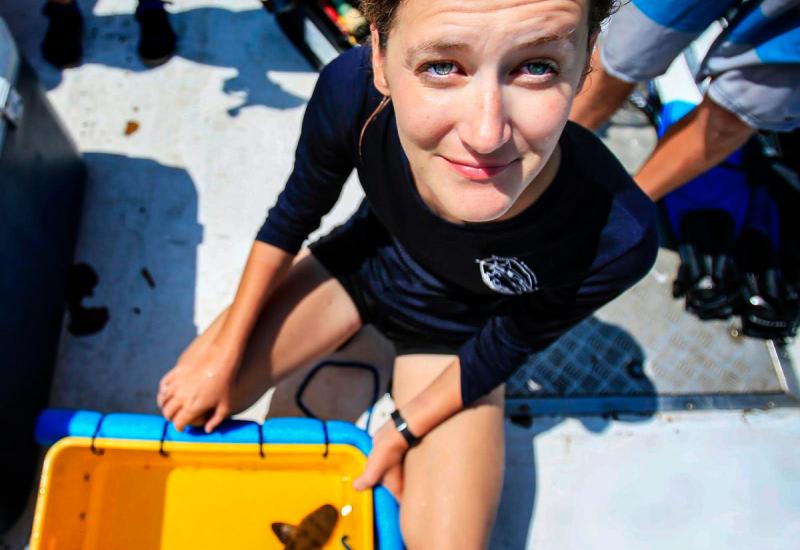Why Sea Urchins are Important in the Caribbean

Courtesy Coral Reef AllianceDiadema antillarum were devastated in the Caribbean by an unknown pathogen in the 1980s, but not in Tela, Honduras.
One of humans’ closest living invertebrate relatives is the ink-black prickly sea urchin—beautiful to look at, but tough on toes.
The long-spined sea urchin species Diadema antillarum is an important herbivore in the Caribbean because it removes macroalgae, makes room for the expansion of existing coral colonies and allows for growth of the next generation of corals.
“Diadema sea urchins are especially important in the Caribbean relative to other coral reefs around the world because of the generally lower level of herbivore species diversity in the Caribbean,” says Dr. Max Bodmer, scientific research manager at Tela Marine Research Center in Tela, Honduras. “For example, there are two to three different types of Diadema in the Indo-Pacific, compared to only one in the Caribbean.

ShutterstockResearchers are studying why Tela's urchins are healthy.
“In the early 1980s, an unknown waterborne bacterial pathogen spread throughout the Caribbean and negatively affected Diadema sea urchin populations,” he adds. “This pathogen reduced their numbers by almost 100 percent. Usually, if you were on a dive before the disease hit, you would see four or five Diadema every square meter; now, you would be lucky to see one or two on every 100-meter stretch of reef.”
But that’s not the case on the northern Caribbean coast of Honduras, where the reefs of Tela Bay were largely unexplored and undescribed before 2011. Two locals, Jenny Myton and Ian Drysdale from the Coral Reef Alliance, found that Tela Bay’s reef system, Banco Capiro, was home to a healthy population of D. antillarum at densities more than 100 times greater than other reefs in the region.
Not only that, but Banco Capiro “also has a hard coral cover of 70 percent, making it one of the healthiest—if not the healthiest—coral reefs in the entire tropical Western Atlantic,” Bodmer says.
Banco Capiro is a highly unusual, and possibly unique, Caribbean coral reef ecosystem, having a plethora of fast-growing coral from the genera Undaria and Agaricia that are resistant to sedimentation and nutrients. These corals display blooming, platelike structures that provide shelter for the Diadema to grow to adulthood.
Having access to Banco Capiro reef and a recovered population means that scientists have been able to compare the ecological dynamics in Tela to those of nearby reefs where urchins have not recovered and coral cover is low. Scientists at TMRC are trying to identify reasons for the lack of recovery throughout the rest of the Caribbean.
They also are researching whether artificial reefs should be implemented throughout the Caribbean to help provide more structure for the development of Diadema into adulthood.
“By using artificial reef structures, we may be able to provide juveniles with shelter from predation and therefore facilitate population recovery,” Bodmer says. If this can be achieved, urchins will start to stimulate coral growth and create and maintain their own habitat, thus reversing the cycle that is keeping the population suppressed.










